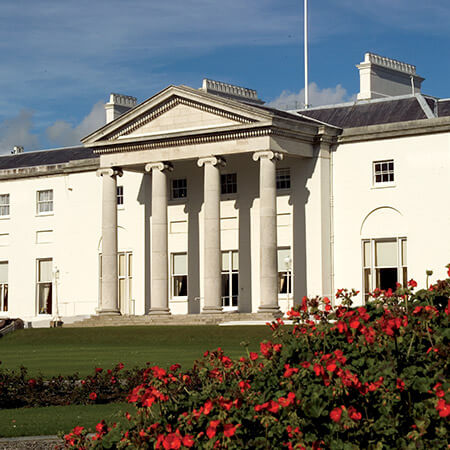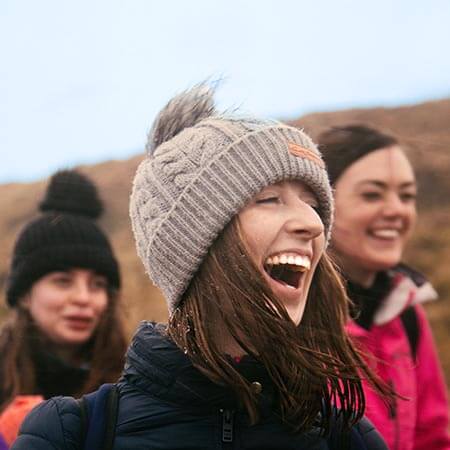A gang of lads. Shy, reserved, quiet. Just chewing the cud. Sure, every now and again, there is a bit of jostling. Just like you would expect from a group of healthy young males. However, there’s one thing you would not expect. And that’s the complete lack of interest in the women across the way.
It’s almost like an old country ballroom. Men on one side. Women on the other. But come September, that will all change. Scents will be donned. Fights will be had. Women will be chased. Another generation will be born.
So Park Ranger, Terry Moore, tells Dublin.ie as we cruise through a blustery Phoenix Park in his jeep.

Image courtesy of Dave Dowling
Bringing the deer to Dublin
Terry himself has been working here for more than 15 years. He loves his job.
“No complaints,” he says. “It’s good to work outdoors. You meet all sorts of people. All walks of life. You see the seasons change. I tell you, I’ve done a lot worse.”
As we pull up alongside a gang of young bucks, Terry says he particularly enjoys one aspect of the job. In addition to his normal ranger duties, he’s been the park’s deer keeper for the past decade.
Terry fills me in on the history of the fallow deer we see roaming the Phoenix Park. Like St. Patrick, the deer were shipped over from Wales. In 1662, the Duke of Ormonde brought them over to set up a royal deer hunting park.
The red deer you find in Munster, around Killarney, are indigenous. Around Wicklow and Kerry, there’s Japanese Sika introduced by another aristocrat – Lord Powerscourt. While the Phoenix Park deer are common fallow deer.
While they aren’t reindeer, a visit to the park is a Christmas tradition for many Dublin families. After the President, who lives in Áras an Uachtaráin just off Chesterfield Avenue, the deer are the most beloved residents of the Phoenix Park.
In addition to animals, various lords introduced new plant species to Ireland – some of which have become invasive. The rhododendron situation in Killarney National Park is a particularly prominent example that has been causing problems recemtly.
Rutting season at the Phoenix Park
Sounding a bit like West Side Story, Terry tells me of the two gangs: “The bucks occupy the east side of the park and the does occupy the west side.” And it sure sounds like it’s a buck’s life.
“The bucks move in around September for the rut, the mating season. So they show up once a year and then depart, and the female is left to do all the work.”
So what do the stags do all day?
“They just hang out – sleeping and eating. They have a three-chambered stomach. So like cattle, they chew the cud. They graze, sit down and regurgitate what they have eaten,” Terry says.

Phoenix Park Ranger Terry Moore. Image courtesy of Dave Dowling
And while there’s a bit of antler sparring going on in front of us, Terry says that’s pretty much in jest.
Things get more like late night Temple Bar during the rut.
“During the mating season, you’ll see them clash antlers with all the power and might that they have,” he says. “It’s fairly explosive and some of the battles can last for up to 20 minutes. All just to establish dominance, to show who is the alpha male.”
And like some of their human counterparts, the female will go for the alpha male if she wants to spread on the best genes.
While the human stag parties seem to favour venturing out in their shirt sleeves, the young bucks in the park will start to change into their winter coats. However, it would seem both human and animal share a common love for overpowering scents.
“The bucks secrete a lot of wax and they urinate in the ground in holes, trying to get themselves as smelly as possible to attract the females. It’s their natural pheromone, their own musky scent. Just like the lads’ aftershave,” Terry says.
Then the females get pregnant. “They are pregnant for eight and a half months. Then all the fawns will be born and then the whole process will start all over again. Just like it has been for 355 years,” he adds.


